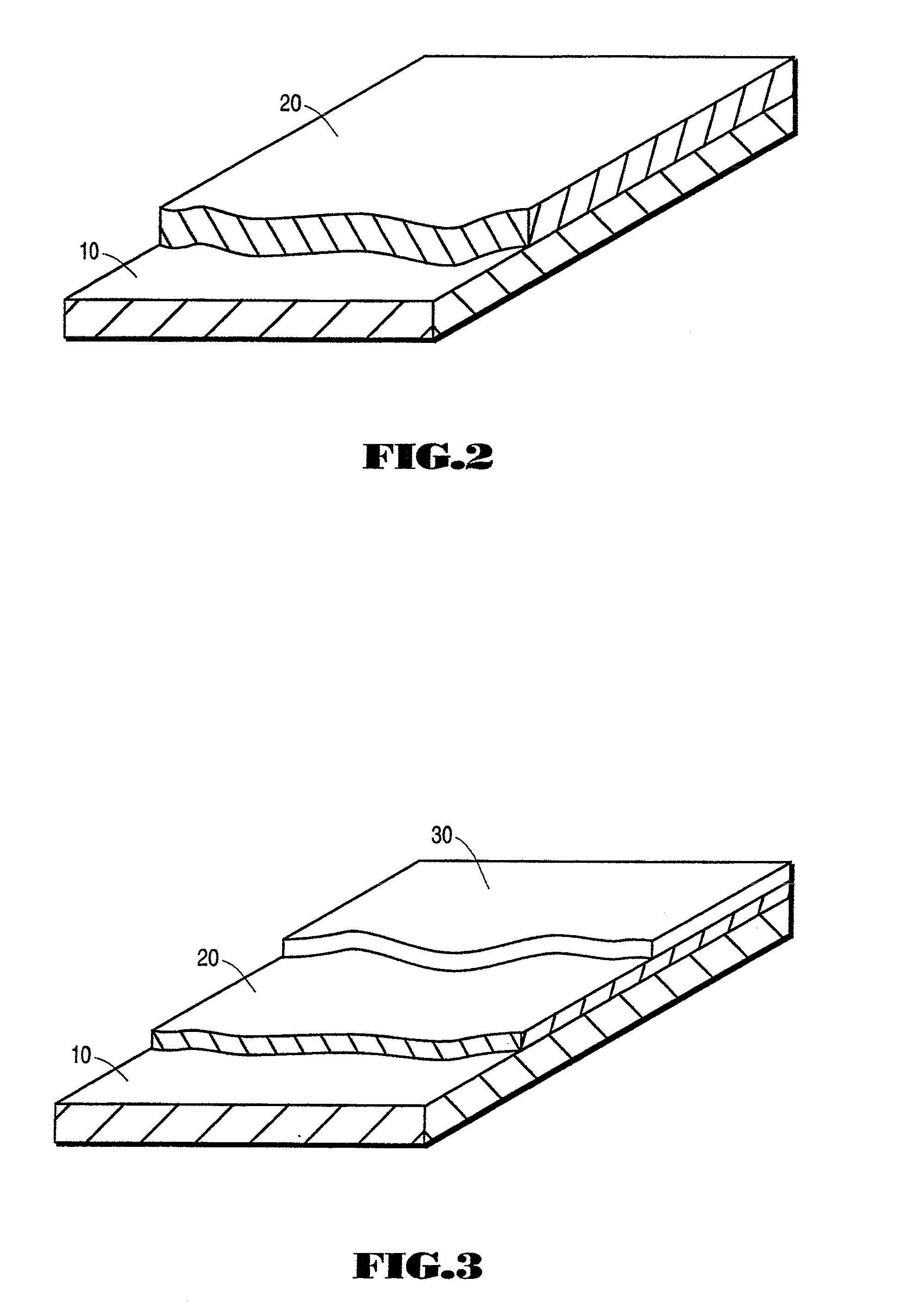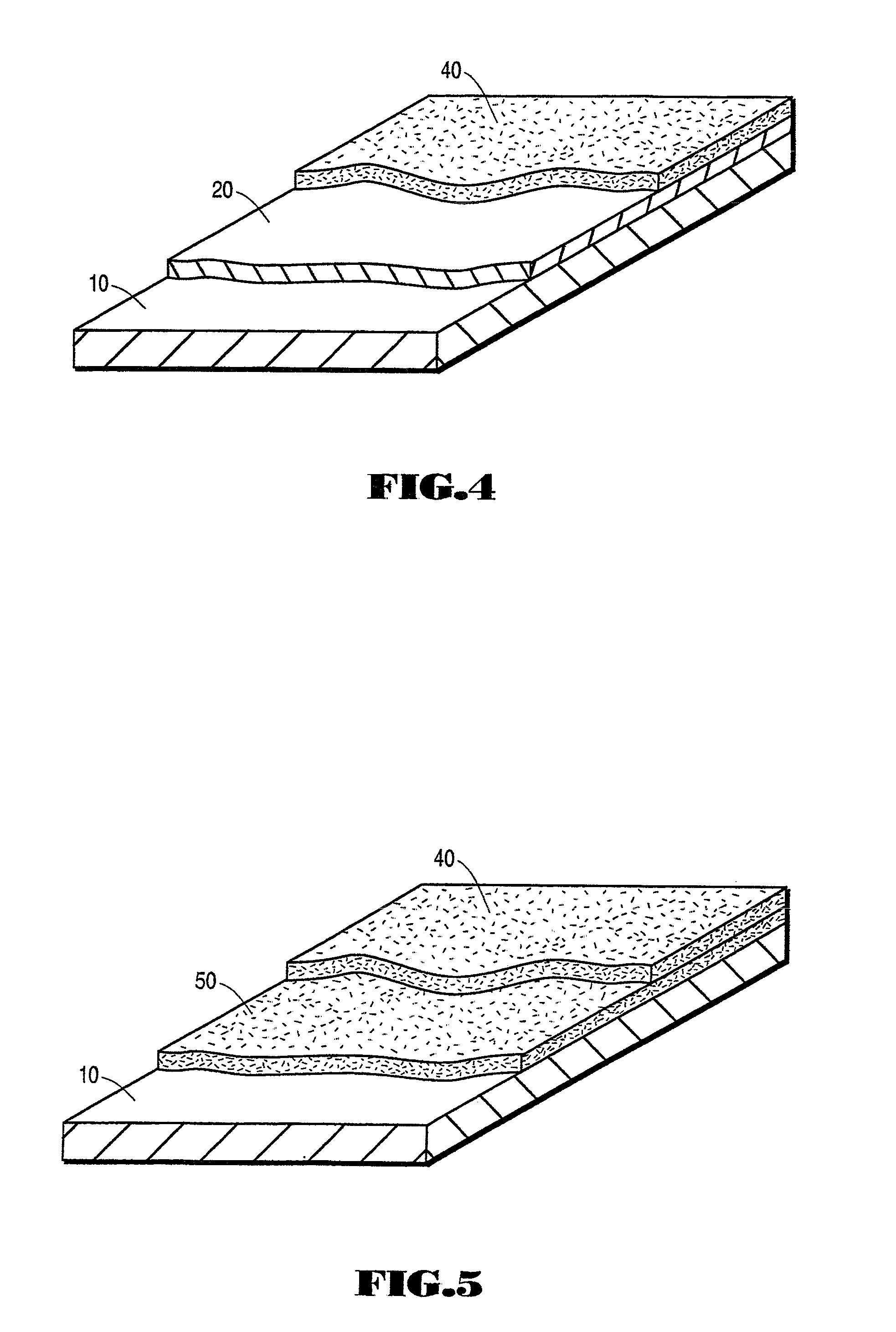Cementitious Veneer and Laminate Material Incorporating Reinforcing Fibers
a cementitious veneer and laminate material technology, applied in the direction of flooring, climate sustainability, solid waste management, etc., can solve the problems of not all existing buildings or other structures are capable of bearing the weight of such objects, structures may impose very significant costs, and require overly complicated building techniques, etc., to achieve the effect of increasing strength and ensuring binding and protective qualities
- Summary
- Abstract
- Description
- Claims
- Application Information
AI Technical Summary
Benefits of technology
Problems solved by technology
Method used
Image
Examples
Embodiment Construction
[0021]Embodiments of the present invention provide a cementitious, masonry-like veneer surface that is economical, lightweight, highly durable and versatile. The cementitious veneer can be readily provided in a variety of colors and textures. In addition, it can also be shaped, molded, sanded and / or polished to achieve many desired appearances.
[0022]Embodiments of the invention also provide an accurate simulation of the appearance, feel and durability of natural masonry. The cementitious veneer of the present invention has sufficient strength to resist chipping, gouging and cracking, but is light enough to cover desired objects without requiring additional support. In addition, the cementitious veneer described herein features advantageous heat and water resistance characteristics, making it suitable for use in a variety of different building and finishing applications. When applied directly to a wall or similar structure, the cementitious veneer can increase the shear strength of t...
PUM
| Property | Measurement | Unit |
|---|---|---|
| lengths | aaaaa | aaaaa |
| lengths | aaaaa | aaaaa |
| cementitious | aaaaa | aaaaa |
Abstract
Description
Claims
Application Information
 Login to View More
Login to View More - R&D
- Intellectual Property
- Life Sciences
- Materials
- Tech Scout
- Unparalleled Data Quality
- Higher Quality Content
- 60% Fewer Hallucinations
Browse by: Latest US Patents, China's latest patents, Technical Efficacy Thesaurus, Application Domain, Technology Topic, Popular Technical Reports.
© 2025 PatSnap. All rights reserved.Legal|Privacy policy|Modern Slavery Act Transparency Statement|Sitemap|About US| Contact US: help@patsnap.com



